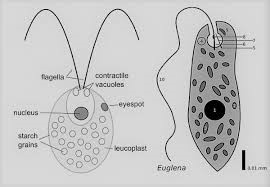What is the major component of blood plasma?
Water.
Ions.
Nutrients.
Gases.
Correct Answer : A
Water is the major component of blood plasma, making up approximately 90-92% of its composition by volume. Blood plasma is the liquid portion of blood, composed mostly of water along with dissolved solutes, such as ions, nutrients, gases, hormones, and waste products. Water in blood plasma serves as the solvent for carrying nutrients, hormones, and other molecules throughout the body, facilitates gas exchange in the lungs and tissues, helps regulate body temperature, and maintains blood volume and pressure. The remaining components of blood plasma, including ions (such as sodium, potassium, and calcium), proteins (such as albumin, globulins, and fibrinogen), and other solutes, contribute to various physiological functions in the body.
HESI A2 Exam Quiz Bank
TEAS 7 Exam Quiz Bank
Find More HESI Questions
HESI A2 Questions: We got the latest updated HESI A2 Questions
100% Money Refund: 100% money back guarantee if you take our full
assessment pass with 80% and fail the actual exam.
Live Tutoring: Fully customized live tutoring lessons.
Guaranteed A Grade: All students who use our services pass with 90%
guarantee.
Related Questions
Correct Answer is A
Explanation
Water is the major component of blood plasma, making up approximately 90-92% of its composition by volume. Blood plasma is the liquid portion of blood, composed mostly of water along with dissolved solutes, such as ions, nutrients, gases, hormones, and waste products. Water in blood plasma serves as the solvent for carrying nutrients, hormones, and other molecules throughout the body, facilitates gas exchange in the lungs and tissues, helps regulate body temperature, and maintains blood volume and pressure. The remaining components of blood plasma, including ions (such as sodium, potassium, and calcium), proteins (such as albumin, globulins, and fibrinogen), and other solutes, contribute to various physiological functions in the body.
Correct Answer is D
Explanation
DNA synthesis, or DNA replication, occurs during the S phase of the cell cycle. The cell cycle is the series of events that a cell undergoes as it grows and divides into two daughter cells. The S phase is the phase of DNA synthesis, during which the cell replicates its DNA to ensure that each daughter cell receives a complete set of genetic information. After DNA replication in the S phase, the cell proceeds to the G2 phase, where it prepares for cell division by checking for errors in DNA replication and synthesizing proteins necessary for mitosis or meiosis.
Correct Answer is A
Explanation
The mitochondria are often referred to as the powerhouse of the cell because they are the primary site of ATP (adenosine triphosphate) production through aerobic respiration. ATP is the primary energy currency of the cell, providing energy for various cellular processes such as muscle contraction, active transport, biosynthesis, and cell division. Mitochondria contain their own DNA and ribosomes, enabling them to produce some of the proteins required for their function. However, their most critical role is in ATP production through the electron transport chain and oxidative phosphorylation, processes that occur within the inner mitochondrial membrane.
Correct Answer is B
Explanation
Contractile vacuoles are organelles found in some protists and single-celled organisms, primarily freshwater unicellular organisms. These vacuoles are responsible for regulating the water content of the cell by actively pumping excess water out of the cell. Contractile vacuoles collect excess water from the cytoplasm through a process of osmosis, where water diffuses into the cell due to differences in solute concentration between the cell and its environment. Once filled, contractile vacuoles contract rhythmically, expelling the excess water from the cell to maintain osmotic balance and prevent cell swelling or bursting. This process is particularly important for organisms living in hypotonic environments where water uptake is significant.

This question was extracted from the actual HESI A2 Exam. Ace your TEAS exam with the actual HESI A2 Exam questions, Start your journey with us today
Visit Naxlex, the Most Trusted HESI Prep Platform With Guaranteed Pass of 90%.
Money back guarantee if you use our service and fail the actual exam. Option of personalised live tutor on your area of weakness.
